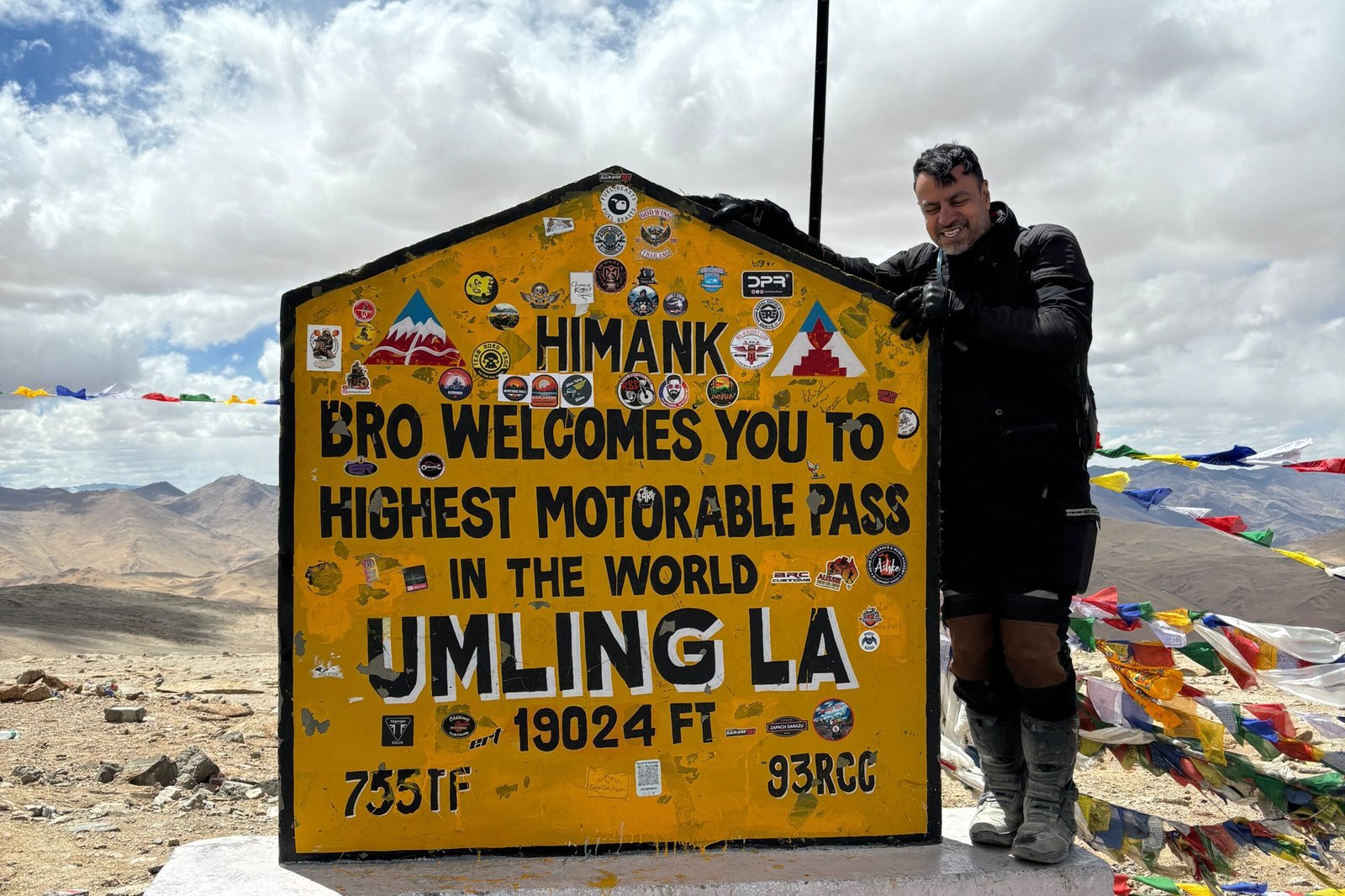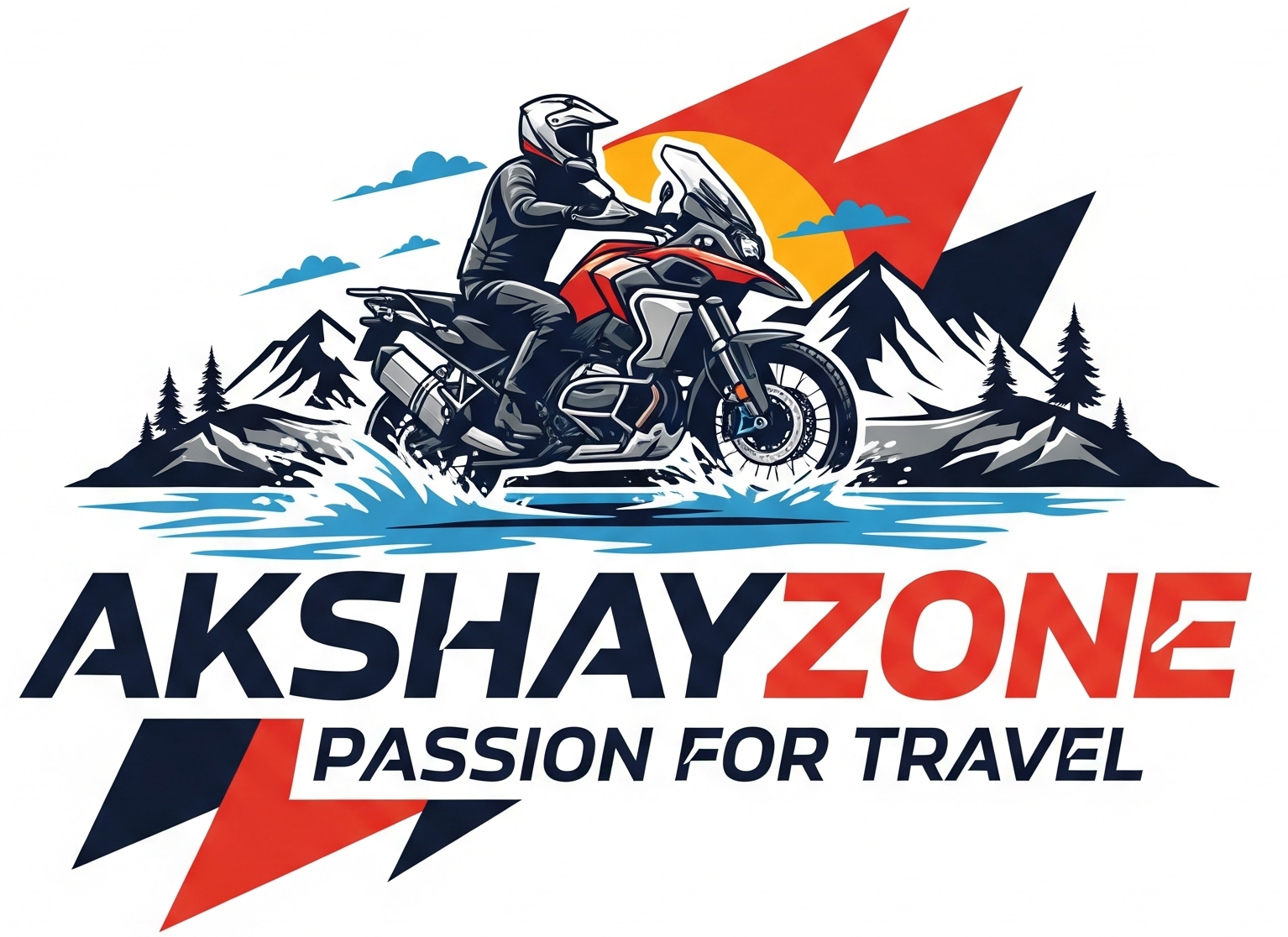
A Rider’s Survival Guide to Ladakh, Spiti, Sikkim & Beyond
High-altitude motorcycle rides in India—be it Ladakh, Spiti Valley, or Sikkim—are bucket-list dreams for most riders. But with the thrill of riding above 10,000 feet comes the challenge of dealing with extreme weather, thin air, and unpredictable terrain. Whether you’re a seasoned adventurer or planning your first Himalayan tour, this guide will help you ride smarter and safer at high altitudes.
What is High Altitude, and Why It’s Challenging
High altitude typically refers to elevations above 8,000 ft (2,500m). Common destinations for motorcyclists like:
- Leh: ~11,500 ft
- Spiti: ~12,500 ft
- Khardung La: ~18,300 ft
- Umling La: ~ 19024 ft
- Gurudongmar (Sikkim): ~17,800 ft
At this height, the air is thinner, meaning:
- Lower oxygen levels
- Lower air pressure
- Extreme temperature swings
- Slower recovery from fatigue
All these factors affect your body and your motorcycle.
Acclimatization: The #1 Key to High-Altitude Survival
Why It Matters:
Acclimatization helps your body adapt to low oxygen and prevent Acute Mountain Sickness (AMS).
Tips to Acclimatize:
- Climb gradually: Never gain more than 2,000–3,000 ft in a day after 10,000 ft.
- Rest well: Take a 24–48 hour break at 9,000–11,000 ft (like in Leh or Kaza) before ascending.
- Hydrate more than usual: Drink lots of water and natural juices, but avoid excess caffeine and alcohol.
- Eat light, high-carb meals: Helps maintain energy and digestion.
- Listen to your body: Headache, dizziness, nausea, and breathlessness are early AMS signs.
Important: Carry Diamox (Acetazolamide) only after consulting a doctor.
Preparing Your Motorcycle for High Altitude
High altitudes also affect engine performance due to reduced oxygen.
Motorcycle Setup Tips:
- Tune the carburetor (for non-FI bikes): Lean the air-fuel mixture.
- Check brakes & clutch: Steep descents require smooth braking.
- Use synthetic oil: More stable in extreme temperatures.
- Check tyre pressure daily: Fluctuates with altitude & temperature.
- Carry spare tubes, clutch cable, brake pads: Parts are rare in remote areas.
- Use tubeless tyres with puncture repair kit if possible.
Important:
- FI bikes auto-adjust, but performance may still drop ~30% at 16,000+ ft.
- Keep your air filter clean—dust is common on mountain trails.
What to Carry on a High-Altitude Ride
Rider Essentials:
- Thermal base layers
- Insulated riding jacket and pants
- Balaclava, neck gaiter
- Warm gloves (preferably waterproof)
- UV-protective sunglasses or goggles
- Rain gear (weather changes fast)
- Electrolyte powders & dry fruits
Survival & Utility Kit:
- Oximeter to monitor blood oxygen levels
- Portable oxygen canisters
- Basic meds (Diamox, paracetamol, Digene, etc.)
- Thermal flask (for hot water or tea)
- Headlamp/torch
- Phone with offline maps
- Solar power bank
⚠️ In winter and shoulder seasons (April, Oct), carry snow chains or avoid late evenings altogether.
Riding Techniques for High Altitude
- Ride slow and steady: High revving stresses both bike and body.
- Use engine braking on descents: Prevents brake overheating.
- Shift weight appropriately: Especially on sandy, rocky or slushy patches.
- Stay in lower gears on steep climbs.
- Avoid standing water and slush: You never know what’s beneath.
- Never ride solo in remote zones like Hanle or Zanskar without informing someone.
How to Handle Acute Mountain Sickness (AMS)
Symptoms:
- Persistent headache
- Nausea
- Fatigue
- Shortness of breath
- Loss of coordination
What To Do:
- Descend immediately by 1,000–2,000 ft.
- Take oxygen if available.
- Rest and hydrate—do not push forward.
- Seek local medical aid at army camps or health centers in Leh/Kaza/Tawang.
Never ignore AMS — it can escalate into life-threatening HAPE or HACE.
Popular High-Altitude Routes (with Key Altitudes)
| Route | Max Altitude | Notes |
|---|---|---|
| Leh – Hanle – Umling La | ~19024 ft | Acclimatize in Leh/Hanle |
| Manali – Leh – Khardung La | ~18,300 ft | Acclimatize in Keylong/Sarchu |
| Manali – Jispa – Shinkula Top | ~16,580 ft | Acclimatize in Manali/Jispa |
| Shimla – Spiti – Kaza – Manali | ~14,900 ft | Kunzum La is steep and often snowy |
| Gangtok – Nathula – Gurudongmar | ~17,800 ft | Permits needed, oxygen is low |
| Srinagar – Leh – Nubra | ~18,000 ft | Easier acclimatization from Srinagar |
Permits & Legal Requirements
- Inner Line Permits (ILP): While the ILP requirement is gone, Indian citizens still need to pay an environment fee (Rs 300) and a Red Cross fund fee (Rs 100). These fees can be paid online through the Ladakh Tourism website. To visit Sikkim, both Indian and foreign nationals need to obtain specific permits. Indian citizens need an Inner Line Permit (ILP) and foreign nationals need an ILP and Protected Area Permit (PAP) for certain areas.
- Check post registration: Compulsory at multiple Army/ITBP locations. An ID like Aadhaar, passport or Driving License is required.
- Bike papers, ID proof, and license must be readily available and is required to be shown at points like south pulu while going towards Khardung La.
Use websites like Ladakh District Permit Site or Sikkim PAP Portal for updated rules.
Final Tips for High-Altitude Motorcycling
- Start early, stop early – Avoid night riding at all costs.
- Respect local advice – Locals know when landslides or snowfall is due.
- Fuel up wherever possible – Petrol pumps are sparse.
- Inform someone about your route each day.
- Don’t underestimate the terrain – even veteran riders face surprises.
Final Words
Riding at high altitudes is a test of endurance, planning, and respect for nature. With the right mindset, preparation, and equipment, it becomes one of the most rewarding riding experiences on Earth. From the silence of Spiti to the winds of Khardung La, each turn is a story worth living—if you ride responsibly.


